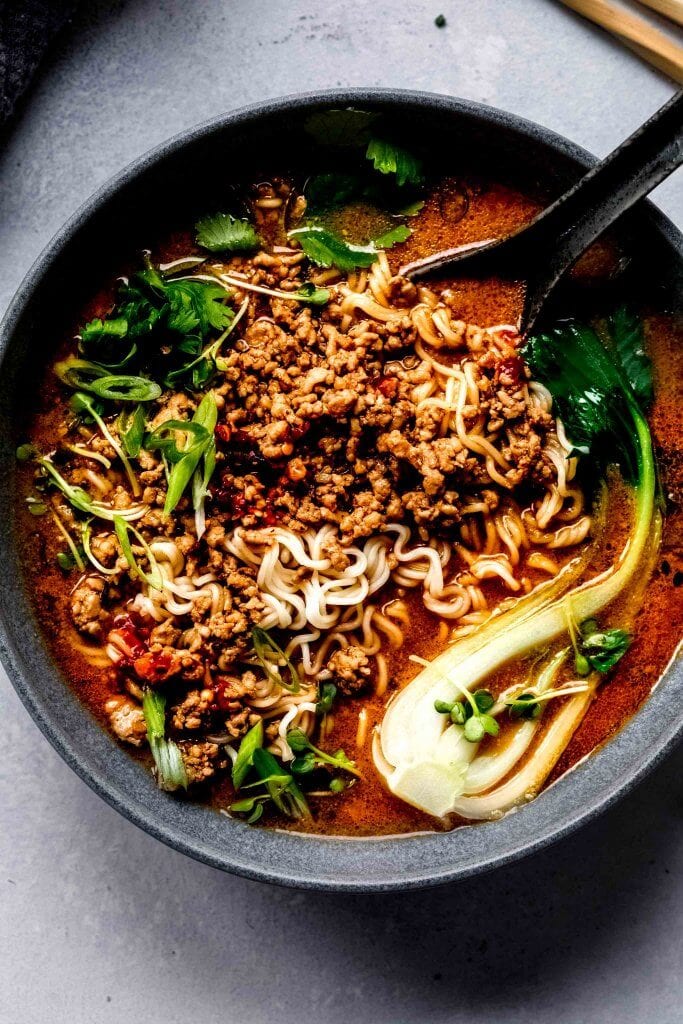
Dan Dan Noodles (Tantanmen Ramen) Platings + Pairings
This spicy Japanese Tan Tan Ramen is ready in just 30 minutes and made with a creamy sesame broth, seasoned ground pork and ramen noodles. Skip to primary navigation. Tan Tan Ramen (or Tantanmen) is a dairy-free Japanese spicy soup that's inspired by Dan Dan Noodles, which is a Chinese Sichuan dish. They're usually both made with sesame.
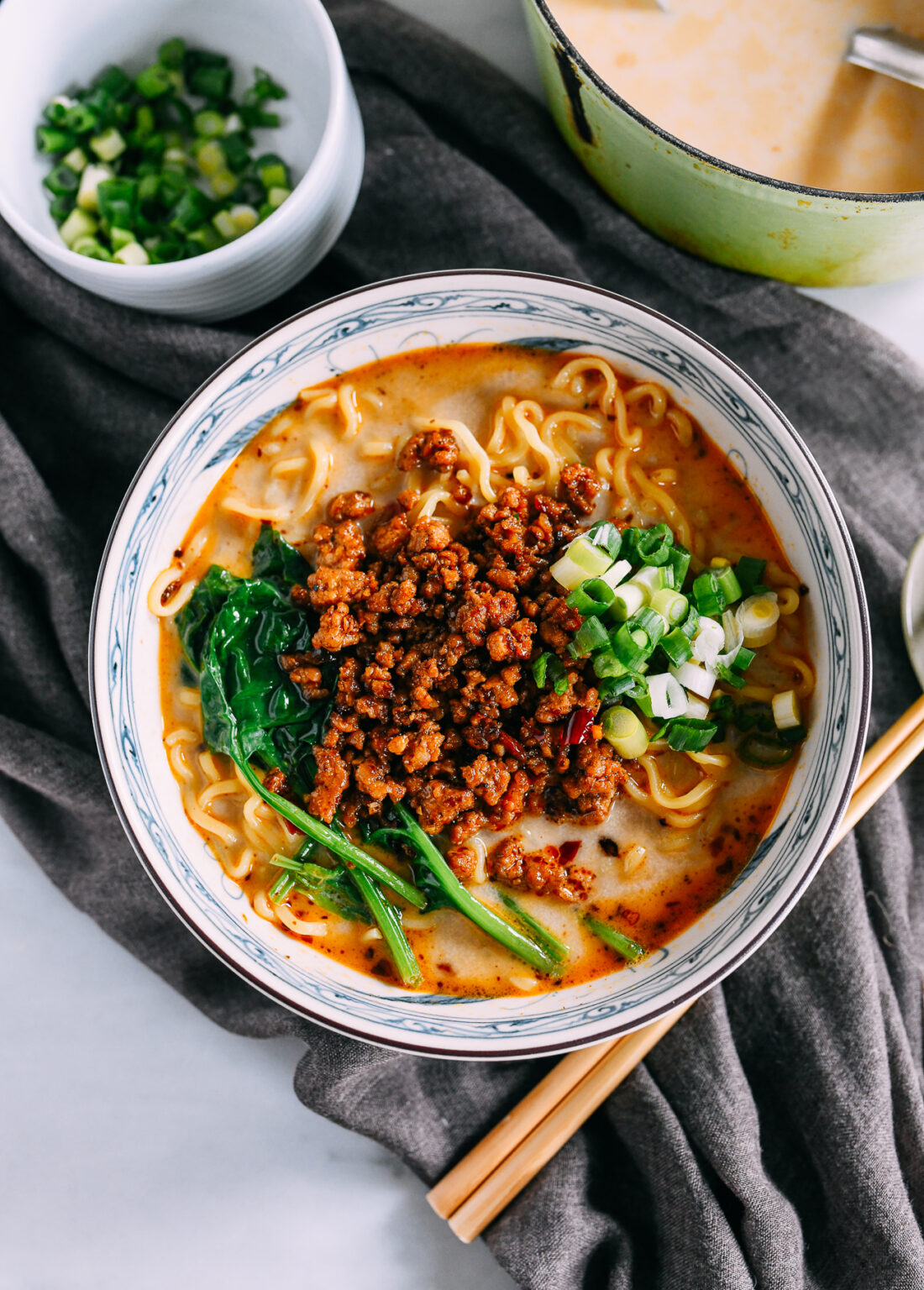
Spicy Japanese Tan Tan Ramen The Woks of Life
Chop 3 cloves garlic, 1 oz of ginger and 1 green onion. toban djan, Chinese chili bean paste. Heat a large wok over high heat, add chili oil, garlic and ginger. Stir fry for 30 seconds or until you can smell aroma, then add toban djan and oyster sauce. Stir fry for 45 seconds to 1 minute. Add 1/2 lb ground pork.
Spicy Dan Dan Ramen from Oishii Ramen, Perth ramen
To properly prepare the pork for dan dan Noodles, you'll need to "overcook" the pork. Use medium-high heat to cook brown surface first, then turn to medium heat to let it roast until the liquid in the meat is fully released and evaporated. In the end you will have dark-brown colored pork without adding any soy sauce.
[I Ate] Spicy Dan Dan Ramen and Tonkotsu Ramen r/food
Tantanmen (担々麺) is a Japanese version of Chinese Sichuan Dan Dan Noodles.Chinese Dan Dan Noodles has a very small amount of soup, but the Japanese version, Tantanmen comes with a plenty of soup just like ramen. Like the original Dan Dan Noodles, Tantanmen is a spicy dish. The spice comes from the large amount of chilli oil added to the sesame-flavoured broth.
Tokyo Style DanDan, Killer Ramen in Los Angeles ramen
Tan Tan Ramen closely resembles Sichuan Dan Dan noodles, therefore making its ingredients list read like a mash-up of both Chinese and Japanese cuisines. Tan Tan Ramen contains a base of bouncy ramen noodles, topped with a spicy broth, cooked greens, and a deeply flavorful ground pork mixture. The broth is made from a flavorful base of spicy.
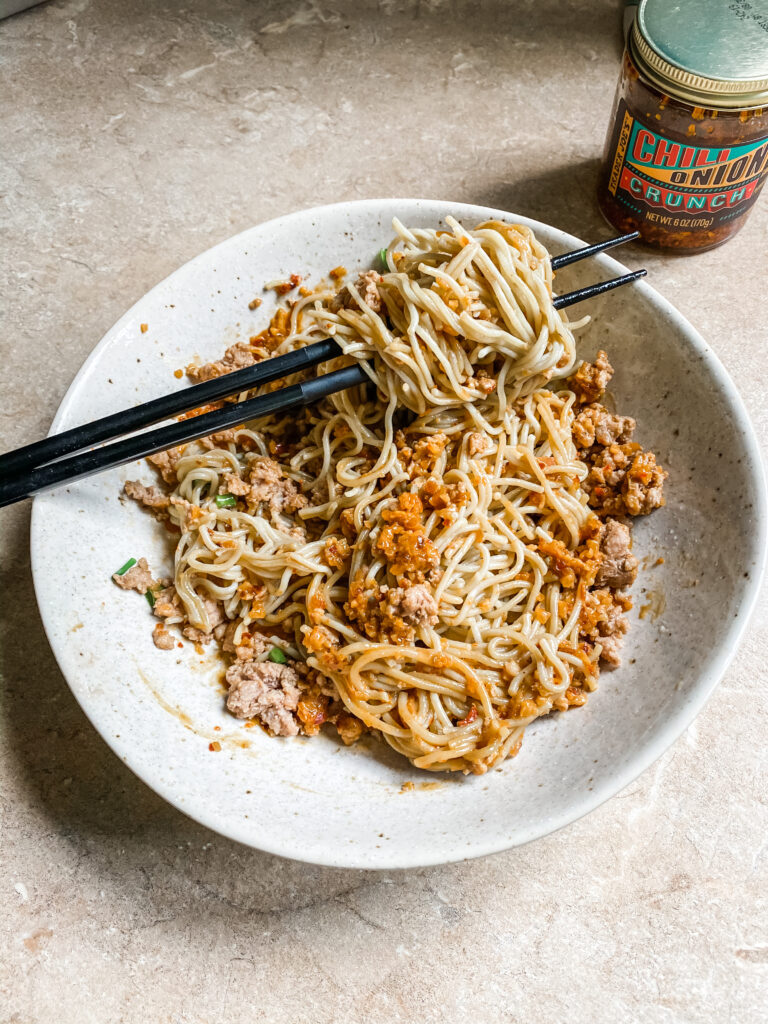
Dan Dan Ramen Noodles in 30 Minutes Feeding The Frasers
Combine soy sauce, sesame paste, rayu chilli oil, sesame oil, vinegar, and garlic in a bowl and set aside. Simmer chicken stock and soy (or almond) milk in a pan. Pour the combined soup broth into the bowl and stir all the tantanmen soup ingredients together. Bring noodles to a boil and drain out the water.
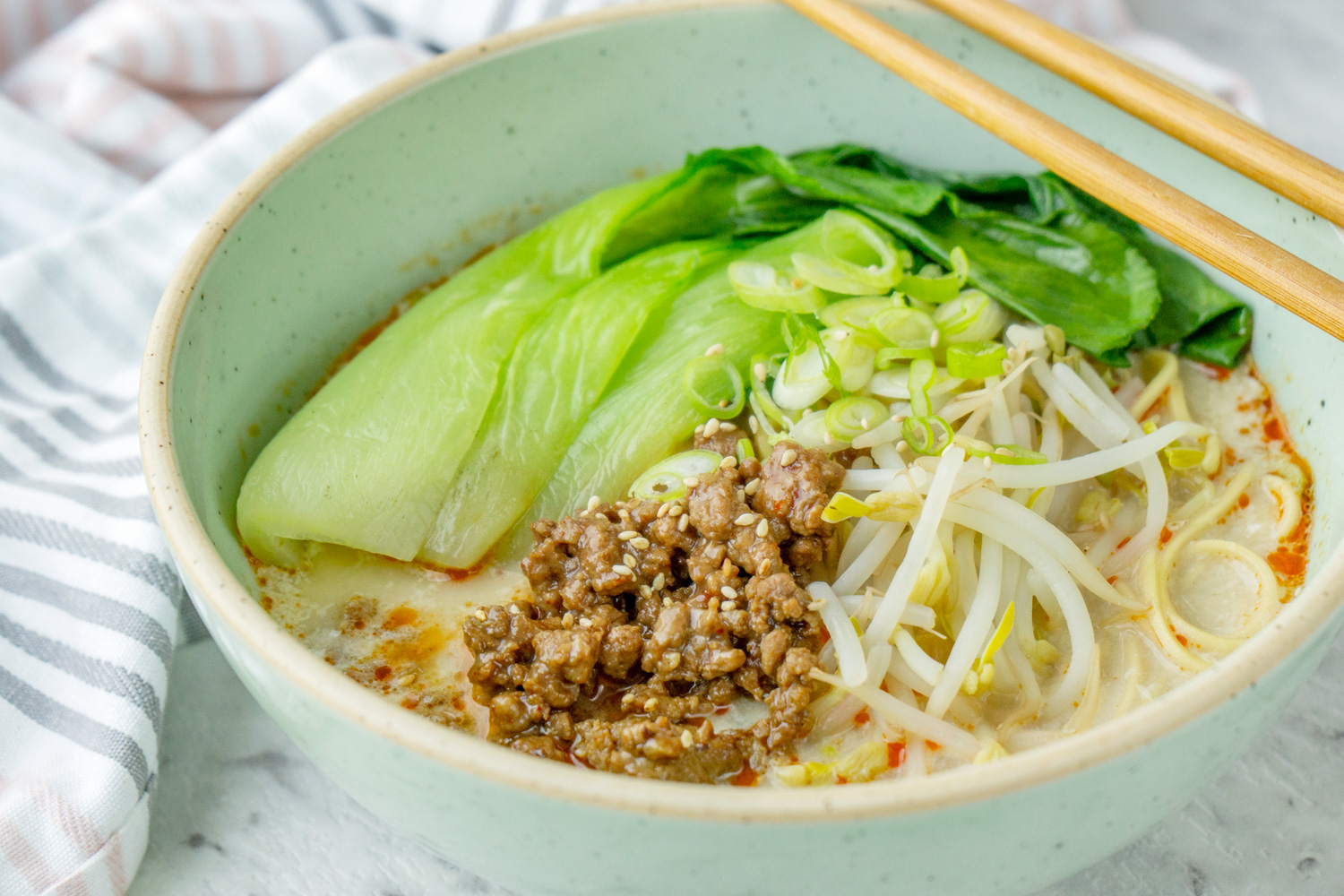
Japanese Dan Dan Noodles (Tantanmen Ramen) Asian Inspirations
Tantanmen (坦々麺, also known as tan tan ramen) is a creamy Japanese version of classic Sichuan dan dan noodles. It consists of fresh ramen noodles served in a savoury broth of sesame or peanut paste and soy milk. It's topped off with crispy minced pork cooked in a mouthwatering blend of seasonings including garlic, ginger and doubanjiang.

Dandan Noodles (Tantanmen Ramen) Recipe Asian recipes, Tantanmen
The COLD dan dan noodle is ready to serve. To make HOT dan dan noodles: Serve the hot noodles in a large bowl and pour in the hot black sesame soup. Place the bok choy, bean sprouts, and meat sauce on top of the noodles. Garnish with peanuts, black sesame seeds, the white part of the green onion, and 1 Tbsp garlic chips, and drizzle with 2 tsp.
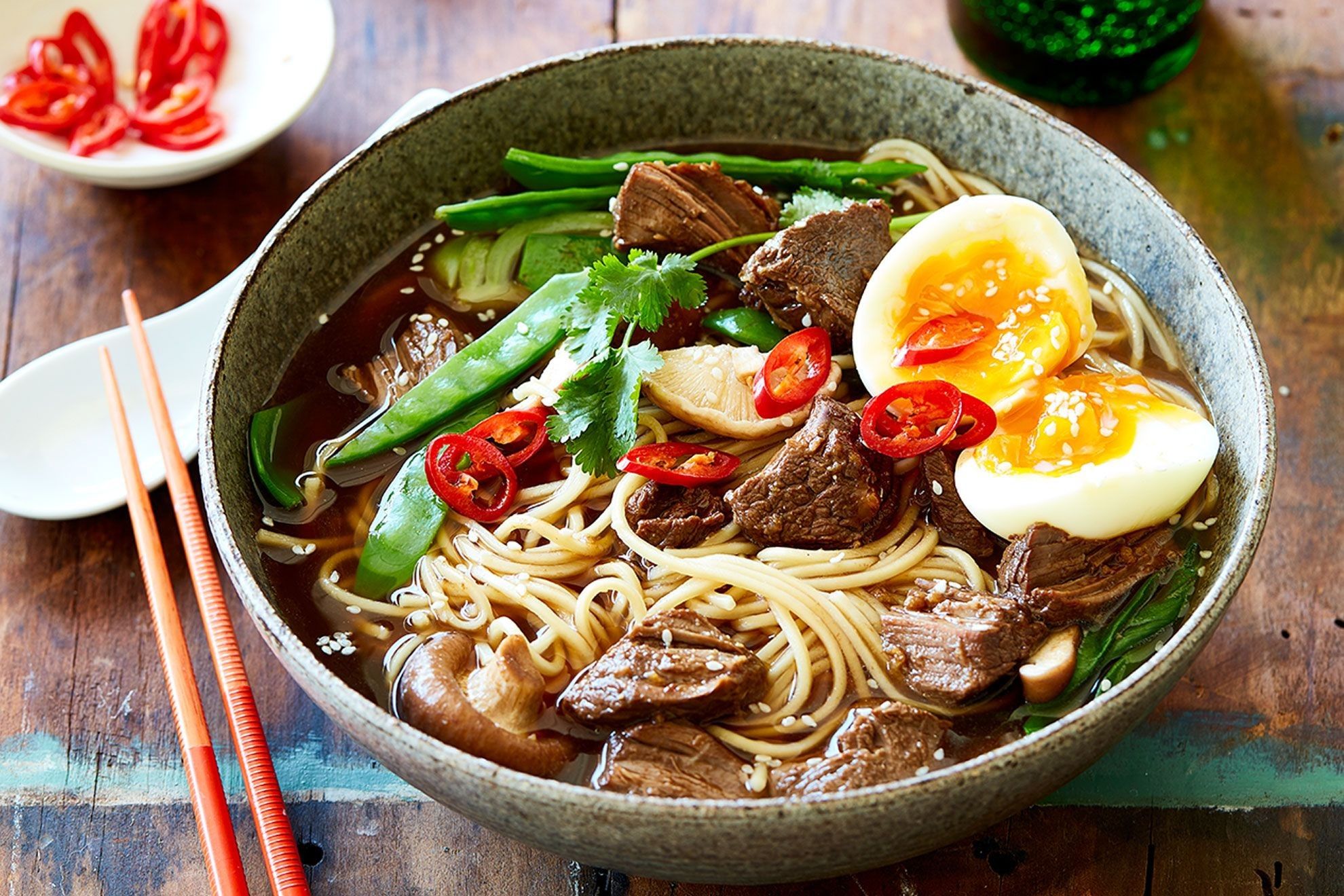
8 Ramen Halal di Jakarta Paling Lezat dan Bikin Ketagihan
Dan Dan Sauce in first - the savoury, Five Spiced sesame sauce with a slick of the signature chilli oil that you know and love about spicy Sichuan noodles! Toppings - stir fried pork, preserved mustard greens (Sui Mi Ya Cai), choi sum and green onions; Serve it just like that, with the sauce pooled at the bottom; then.

Kenali Perbedaan Udon, Soba dan Ramen
Part 1: Dan Dan Noodles - The Chili Oil. 2 tablespoons Sichuan peppercorns. 1 inch-long piece of Chinese cinnamon (gui-pi) 2 star anise. 1 cup oil. 1/4 cup crushed red pepper flakes. In a small pot, add the Sichuan peppercorns, cinnamon stick, star anise, and oil. Over medium low heat, slowly heat to 325 degrees Fahrenheit, and then turn off.

Easy Tan Tan Ramen (Dan Dan Noodles)
Instructions. Bring a large pot of water to a boil (for the ramen). Heat oil in a large saucepan over medium heat. Add ginger & garlic and cook until light golden, about 3 minutes. Add green onions, black bean sauce, sesame oil and chili oil, cook for 2 minutes. Add broth, peanut butter, tamari, tahini and chili paste.

Easy Tan Tan Ramen (Dan Dan Noodles)
How To Make Dan Dan Noodles. Make the Dan Dan sauce: Add all the sauce ingredients to a bowl and whisk until combined. Set aside. Prep the pork: In a bowl add ground pork, garlic, Hoisin sauce, ginger, Shaoxing wine, soy sauce and mix well. Let the pork marinate for 10 minutes.
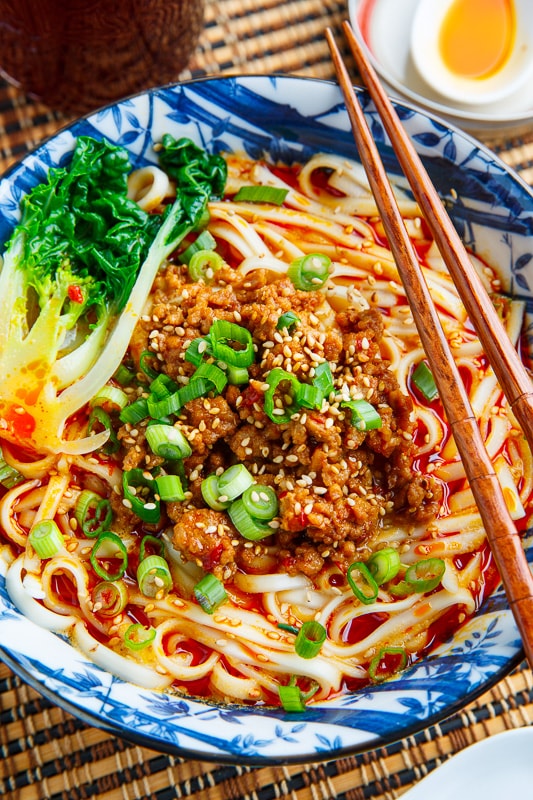
Dandan Noodles (Tantanmen Ramen) Closet Cooking
Tan Tan Ramen is a spicy, incredibly tasty Japanese ramen noodle soup. It also happens to be based on a Chinese recipe. Yep, Japanese "tantanmen" is actually based on Chinese "Dan Dan Mian," or Dan Dan Noodles, a spicy Sichuan dish of noodles, stir-fried ground pork, and blanched greens.. We'll get into the similarities and differences between these two delicious bowls of noodles.

Spicy Dan Dan Noodles with Chicken Cooking for Keeps
Tan Tan Ramen (Tantanmen) is a rich and flavorful Japanese ramen noodle soup adapted from the famous Chinese Sichuan dan dan mian. It's unique for both its savory topping and the spicy yet creamy soup broth. This hot bowl of ramen is too good to be missed! {Vegetarian and gluten-free options included}

Dan Dan Ramen Stuffed peppers, Comfort food, Hoisin sauce
Follow three simple steps: Fry the toppings: Firstly fry peanuts or soybeans in oil. Then fry minced meat and preserved vegetable in the remaining oil. Mix the sauce: Thin Chinese sesame paste with water, then add chilli oil, ground Sichuan pepper & other seasonings. Cook the noodles: Cook noodles in boiling water.

Nissin Nakiryu Tantanmen I Tried the DanDan Instant Ramen
Dandan noodles. Dandan noodles or dandanmian ( traditional Chinese: 擔擔麵; simplified Chinese: 担担面 ), literally "carrying-pole noodles", [2] is a noodle dish originating from Chinese Sichuan cuisine. It consists of a spicy sauce usually containing preserved vegetables (often including zha cai ( 榨菜 ), lower enlarged mustard stems.